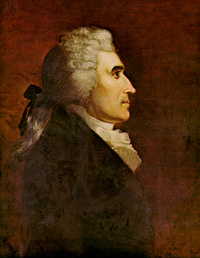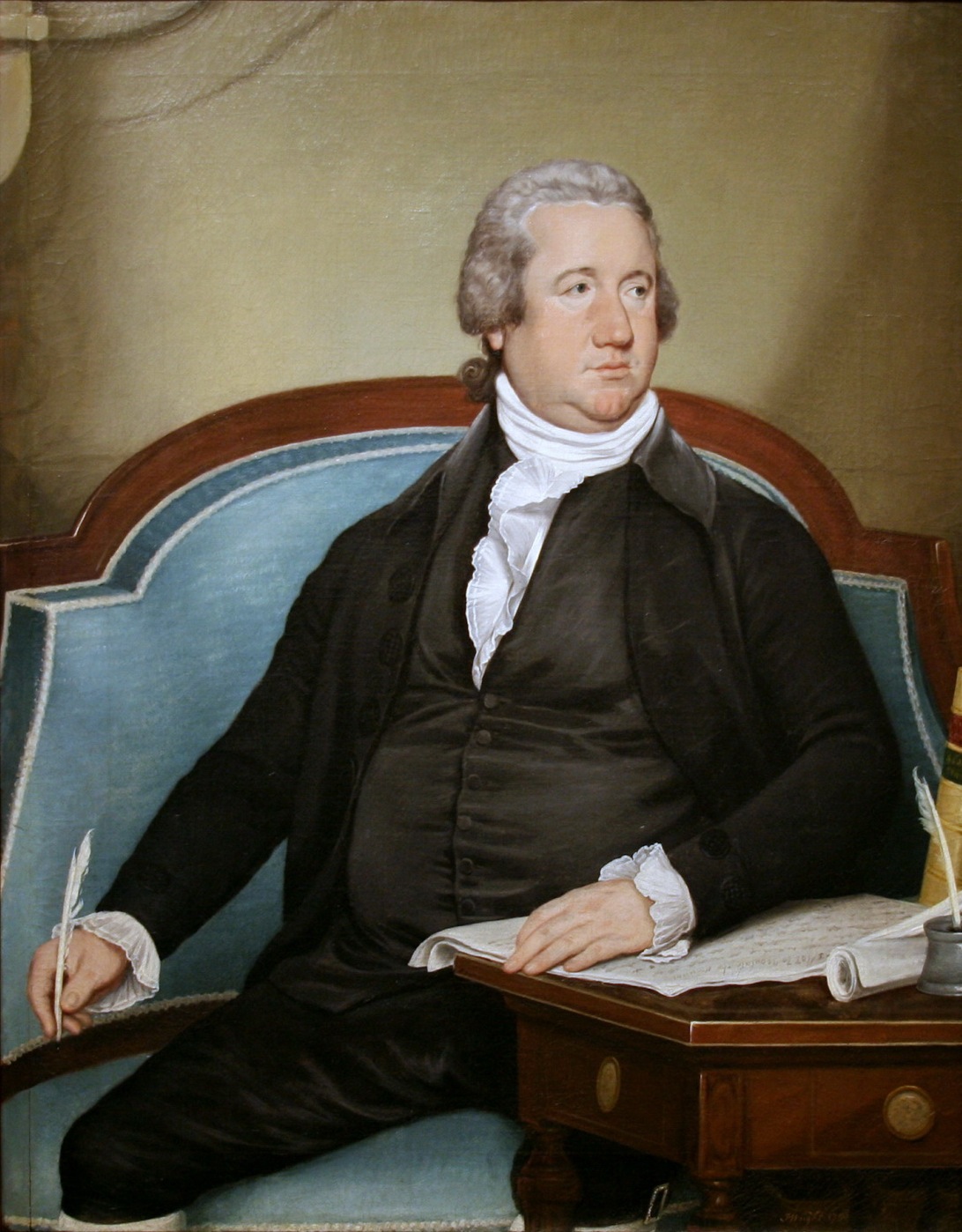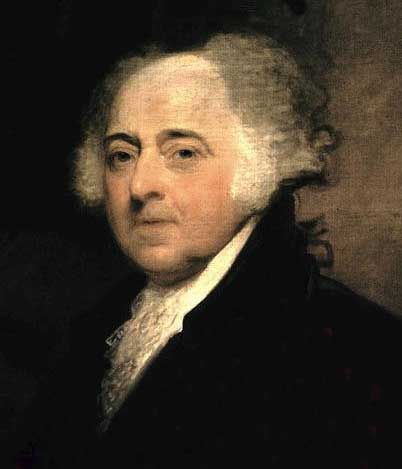|
4th United States Congress
The 4th United States Congress was a meeting of the legislative branch of the United States federal government, consisting of the United States Senate and the United States House of Representatives. It met at Congress Hall in Philadelphia, Pennsylvania, from March 4, 1795, to March 4, 1797, during the last two years of George Washington's presidency. The apportionment of seats in the House of Representatives was based on the 1790 United States census. The Senate had a Federalist majority, and the House had a Democratic-Republican majority. Major events *September 17, 1796: Washington's Farewell Address warned against partisan politics and foreign entanglements. *November 4 - December 7, 1796: 1796 United States presidential election: Incumbent vice president John Adams defeated Secretary of State Thomas Jefferson. Major legislation Treaties ratified * June 24, 1795: Treaty of London ("Jay's Treaty") * March 7, 1796: Treaty of Madrid ("Pinckney's Treaty") States admi ... [...More Info...] [...Related Items...] OR: [Wikipedia] [Google] [Baidu] |
Congress Hall
Congress Hall, located in Philadelphia at the intersection of Chestnut and 6th Streets, served as the seat of the United States Congress from December 6, 1790, to May 14, 1800. During Congress Hall's duration as the capitol of the United States, the country admitted three new states, Vermont, Kentucky, and Tennessee; ratified the Bill of Rights of the United States Constitution; and oversaw the presidential inaugurations of both George Washington (his second) and John Adams. Congress Hall was restored in the 20th century to its original appearance in 1796. The building is now managed by the National Park Service within the Independence National Historical Park and is open for public tours. Congress Hall is conjoined with Independence Hall, which is adjacent to the east. Background Philadelphia served as the capital of the United States both during and immediately after the American Revolutionary War. Independence Hall, located next door, served as the meeting place of the Co ... [...More Info...] [...Related Items...] OR: [Wikipedia] [Google] [Baidu] |
Jay Treaty
The Treaty of Amity, Commerce, and Navigation, Between His Britannic Majesty and the United States of America, commonly known as the Jay Treaty, and also as Jay's Treaty, was a 1794 treaty between the United States and Great Britain that averted war, resolved issues remaining since the Treaty of Paris of 1783 (which ended the American Revolutionary War), and facilitated ten years of peaceful trade between the United States and Britain in the midst of the French Revolutionary Wars, which began in 1792. The Treaty was designed by Alexander Hamilton and supported by President George Washington. It angered France and bitterly divided Americans. It inflamed the new growth of two opposing parties in every state, the pro-Treaty Federalists and the anti-Treaty Jeffersonian Republicans. The Treaty was negotiated by John Jay and gained many of the primary American goals. This included the withdrawal of British Army units from forts in the Northwest Territory that it had refused to relin ... [...More Info...] [...Related Items...] OR: [Wikipedia] [Google] [Baidu] |
Speaker Of The United States House Of Representatives
The speaker of the United States House of Representatives, commonly known as the speaker of the House, is the presiding officer of the United States House of Representatives. The office was established in 1789 by Article I, Section 2 of the U.S. Constitution. The speaker is the political and parliamentary leader of the House and is simultaneously its presiding officer, ''de facto'' leader of the body's majority party, and the institution's administrative head. Speakers also perform various other administrative and procedural functions. Given these several roles and responsibilities, the speaker usually does not personally preside over debates. That duty is instead delegated to members of the House from the majority party. Nor does the speaker regularly participate in floor debates. The Constitution does not require the speaker to be an incumbent member of the House of Representatives, although every speaker thus far has been. The speaker is second in the United States president ... [...More Info...] [...Related Items...] OR: [Wikipedia] [Google] [Baidu] |
President Pro Tempore Of The United States Senate
The president pro tempore of the United States Senate (often shortened to president pro tem) is the second-highest-ranking official of the United States Senate, after the Vice President of the United States, vice president. According to Article One of the United States Constitution, Article One, Section Three of the United States Constitution, the vice president of the United States is the Presiding Officer of the United States Senate, president of the Senate (despite not being a senator), and the Senate must choose a president ''pro tempore'' to act in the vice president's absence. The president pro tempore is elected by the Senate as a whole, usually by a resolution which is adopted by unanimous consent without a formal vote. The Constitution does not specify who can serve in this position, but the Senate has always elected one of its current members. Unlike the vice president, the president pro tempore cannot cast a tie-breaking vote when the Senate is equally divided. The p ... [...More Info...] [...Related Items...] OR: [Wikipedia] [Google] [Baidu] |
President Of The United States Senate
The vice president of the United States (VPOTUS) is the second-highest officer in the executive branch of the U.S. federal government, after the president of the United States, and ranks first in the presidential line of succession. The vice president is also an officer in the legislative branch, as the president of the Senate. In this capacity, the vice president is empowered to preside over Senate deliberations at any time, but may not vote except to cast a tie-breaking vote. The vice president is indirectly elected together with the president to a four-year term of office by the people of the United States through the Electoral College. The modern vice presidency is a position of significant power and is widely seen as an integral part of a president's administration. While the exact nature of the role varies in each administration, most modern vice presidents serve as a key presidential advisor, governing partner, and representative of the president. The vice president is ... [...More Info...] [...Related Items...] OR: [Wikipedia] [Google] [Baidu] |
Anti-Administration Party (United States)
The Anti-Administration Party was an informal political faction in the United States led by James Madison and Thomas Jefferson that opposed policies of then Secretary of the Treasury Alexander Hamilton Alexander Hamilton (January 11, 1755 or 1757July 12, 1804) was an American military officer, statesman, and Founding Father who served as the first United States secretary of the treasury from 1789 to 1795. Born out of wedlock in Charlest ... in the first term of US President George Washington. It was not an organized political party but an unorganized faction. Most members had been Anti-Federalists in 1788, who had opposed ratification of the US Constitution. However, the situation was fluid, with members joining and leaving. Although contemporaries often referred to Hamilton's opponents as "Anti-Federalists", that term is now seen as imprecise since several Anti-Administration leaders supported ratification, including Virginia Representative James Madison. He joined fo ... [...More Info...] [...Related Items...] OR: [Wikipedia] [Google] [Baidu] |
Pro-Administration Party
The Federalist Party was a conservative political party which was the first political party in the United States. As such, under Alexander Hamilton, it dominated the national government from 1789 to 1801. Defeated by the Jeffersonian Republicans in 1800, it became a minority party while keeping its stronghold in New England and made a brief resurgence by opposing the War of 1812. It then collapsed with its last presidential candidate in 1816. Remnants lasted for a few years afterwards. The party appealed to businesses and to conservatives who favored banks, national over state government, manufacturing, an army and navy, and in world affairs preferred Great Britain and strongly opposed the French Revolution. The party favored centralization, federalism, modernization, industrialization and protectionism. The Federalists called for a strong national government that promoted economic growth and fostered friendly relationships with Great Britain in opposition to Revolutionary Fr ... [...More Info...] [...Related Items...] OR: [Wikipedia] [Google] [Baidu] |
Anti-Administration Party
The Anti-Administration Party was an informal political faction in the United States led by James Madison and Thomas Jefferson that opposed policies of then Secretary of the Treasury Alexander Hamilton in the first term of US President George Washington. It was not an organized political party but an unorganized faction. Most members had been Anti-Federalists in 1788, who had opposed ratification of the US Constitution. However, the situation was fluid, with members joining and leaving. Although contemporaries often referred to Hamilton's opponents as "Anti-Federalists", that term is now seen as imprecise since several Anti-Administration leaders supported ratification, including Virginia Representative James Madison. He joined former Anti-Federalists to oppose Hamilton's financial plans in 1790. William Maclay, a leader of the faction in the Senate, used in his Congressional diary the term "Republican". After Jefferson took leadership of the opposition to Hamilton in 1792, th ... [...More Info...] [...Related Items...] OR: [Wikipedia] [Google] [Baidu] |
Changes In Membership
Changes may refer to: Books * ''Changes'', the 12th novel in Jim Butcher's ''The Dresden Files'' Series * ''Changes'', a novel by Danielle Steel * ''Changes'', a trilogy of novels on which the BBC TV series was based, written by Peter Dickinson Film and television * ''Changes'' (1991 film), a 1991 television film * ''Changes'' (1969 film), a 1969 American drama film * ''Changes'' (advertisement), a 1987 advertisement * ''The Changes'' (TV series), produced by the BBC in 1975 * "Changes" (''House''), a 2011 episode of the American medical drama ''House'' * "Changes", a 1984 episode of the American TV sitcom ''Silver Spoons'' * "Changes", the name of five episodes of the TV sitcom ''Punky Brewster'' * "Changes", the name of the ''You Can't Do That on Television'' 2004 reunion episode Music * A jazz term for chord progression * An algorithmic Change ringing, pattern for ringing tuned bells * ''Changes'' (Godsmack video album), a 2004 documentary and live DVD by the heavy met ... [...More Info...] [...Related Items...] OR: [Wikipedia] [Google] [Baidu] |
US Navy 031029-N-6236G-001 A Painting Of President John Adams (1735-1826), 2nd President Of The United States, By Asher B
The United States of America (U.S.A. or USA), commonly known as the United States (U.S. or US) or America, is a country Continental United States, primarily located in North America. It consists of 50 U.S. state, states, a Washington, D.C., federal district, five major unincorporated territories, nine United States Minor Outlying Islands, Minor Outlying Islands, and 326 Indian reservations. The United States is also in Compact of Free Association, free association with three Oceania, Pacific Island Sovereign state, sovereign states: the Federated States of Micronesia, the Marshall Islands, and the Palau, Republic of Palau. It is the world's List of countries and dependencies by area, third-largest country by both land and total area. It shares land borders Canada–United States border, with Canada to its north and Mexico–United States border, with Mexico to its south and has maritime borders with the Bahamas, Cuba, Russia, and other nations. With a population of over 333 m ... [...More Info...] [...Related Items...] OR: [Wikipedia] [Google] [Baidu] |


.jpg)



